German satellite on 'berg watch'
- Published
The German radar satellite TerraSAR-X is on "PIG watch".
The spacecraft, which circles the globe at an altitude of 500km, is returning regular images of the Pine Island Glacier (PIG) ice shelf.
Scientists expect its observations to alert them to the birth of a monster iceberg covering some 750 sq km.
A huge crack in the shelf was first noticed in TerraSAR-X data back on 13 October. A Nasa aeroplane also got photographic confirmation the next day.
The crack seems to have propagated in two main steps - the first break tearing a 24km-long gash in the shelf; the second, just a few days later, opening up the fracture to 28km in length.
A few more km and the tabular block of ice will be floating free of the shelf.
See the giant crack take shape


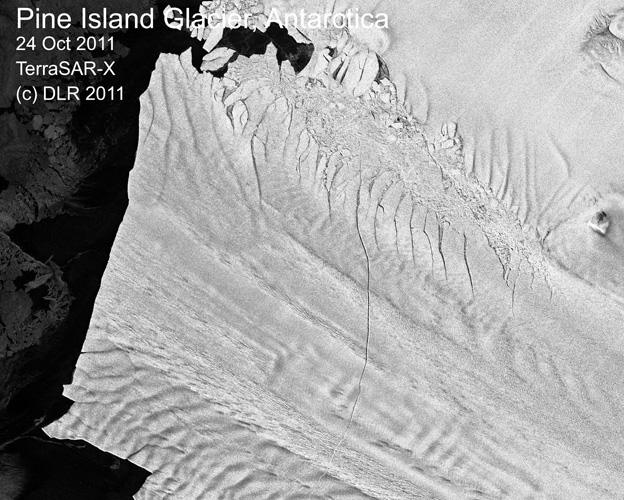
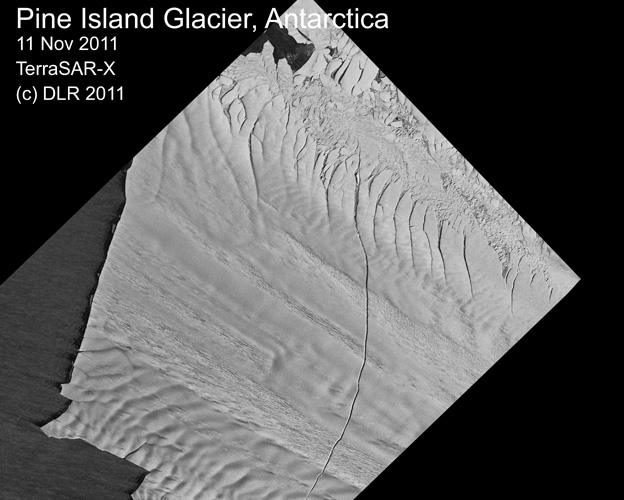
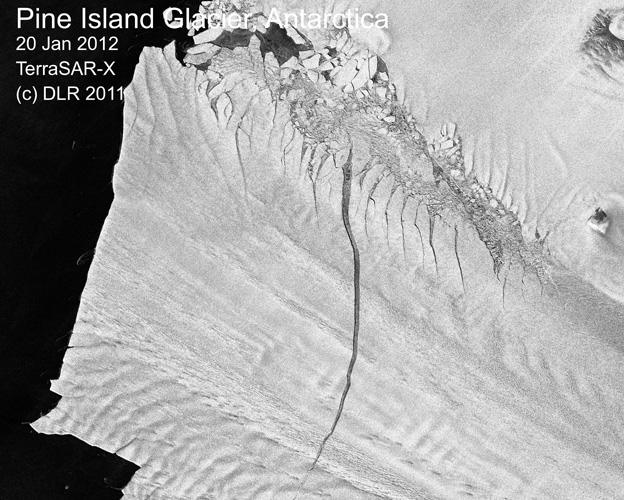
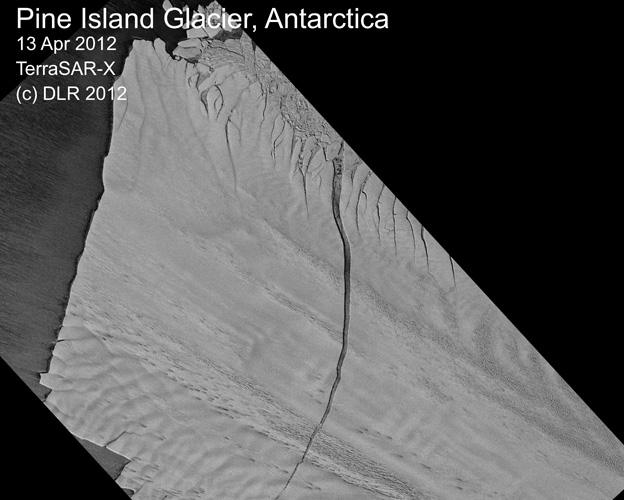
"These are brittle failures, not ductile failures," explained <link> <caption>Prof Angelika Humbert from the Alfred Wegener Institute (AWI), Bremerhaven</caption> <url href="http://www.awi.de/People/show.php?ahumbert" platform="highweb"/> </link> . "When they break, they break really quite fast - typically, at one third the speed of sound."
That means the initial gap in the shelf would have opened up along its full length nearly instantaneously.
Prof Humbert has been describing the TerraSAR-X monitoring effort here at the <link> <caption>European Geosciences Union (EGU) meeting</caption> <url href="http://www.egu2012.eu/" platform="highweb"/> </link> in Vienna, Austria.
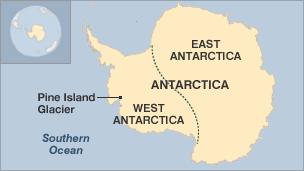
The German Space Agency (DLR) satellite returns a picture of the PIG shelf about every third day, although it is 11 days before it gets exactly the same viewing angle.
Being a radar mission, TerraSAR-X sees right through cloud and so is guaranteed to catch the "calving" event - once it has happened - on its next pass.
"I'd bet a single malt it will go in the next six months," Prof Humbert told BBC News.
"We'll probably be the first to see it go. I hope so, but that's not so important.
"What's important here is that we acquire the data. We study calving laws - for small-scale calving, which is perhaps not so interesting to the public, but also for these big events.
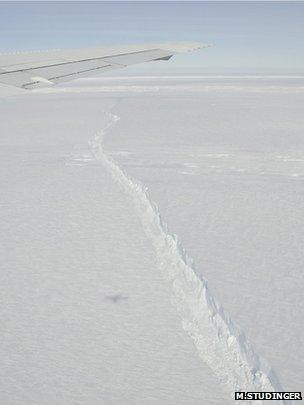
The Americans flew a plane over the crack
"We want to incorporate these laws into our ice sheet and ice shelf modelling. If you want to calculate the extent of Antarctic ice masses over centuries then you need these calving laws."
The ice shelf is the floating projection of the mighty Pine Island Glacier, which drains something like 10% of all the ice flowing out of the West Antarctic Ice Sheet into the ocean.
Gravity pulls the ice in the glacier westward along the Hudson Mountains towards the Amundsen Sea. The shelf itself reaches some 50km out over the water beyond the grounding line of the glacier.
It is extending its reach by about 15m per day, and iceberg calving is an inevitable - and very natural - consequence of this behaviour.
Very big tabular bergs will come off the end of the shelf every 6-10 years. Previous notable events occurred in 2007 and 2001.
A <link> <caption>recent University of Texas at Austin study</caption> <url href="http://www.igsoc.org/journal/58/209/j11J262.html" platform="highweb"/> </link> , examining nearly 40 years' worth of satellite imagery, showed that many ice shelves in West Antarctica have been loosening their grip on the bay walls that constrain them.
The analysis revealed that the locations where the shelves gripped on to rock or slower ice masses had fractured and retreated inland over the observation period.
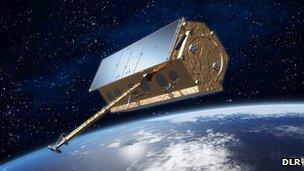
TerraSAR-X circles the Earth from pole to pole at an altitude of just over 500km
It is something that Prof Humbert has noted in relation to the PIG shelf.
"Where you form the initial cracks - that location is now further upstream than it was in 2001," she said.
When the big berg does finally break away, it will move westwards around Antarctica.
It will gradually erode over time, but it may be many years before the block melts away completely.
"With fracture mechanics it's not possible to predict with any sort of confidence when something will happen, but the velocity of the PIG ice stream is so high that the chances are it will break away sooner rather than later," the AWI researcher said.
Jonathan.Amos-INTERNET@bbc.co.uk and follow me on <link> <caption>Twitter</caption> <url href="https://twitter.com/#!/BBCAmos" platform="highweb"/> </link>
- Published18 January 2012
- Published3 November 2011
- Published15 December 2010
- Published9 August 2011
- Published15 October 2010
- Published20 October 2010